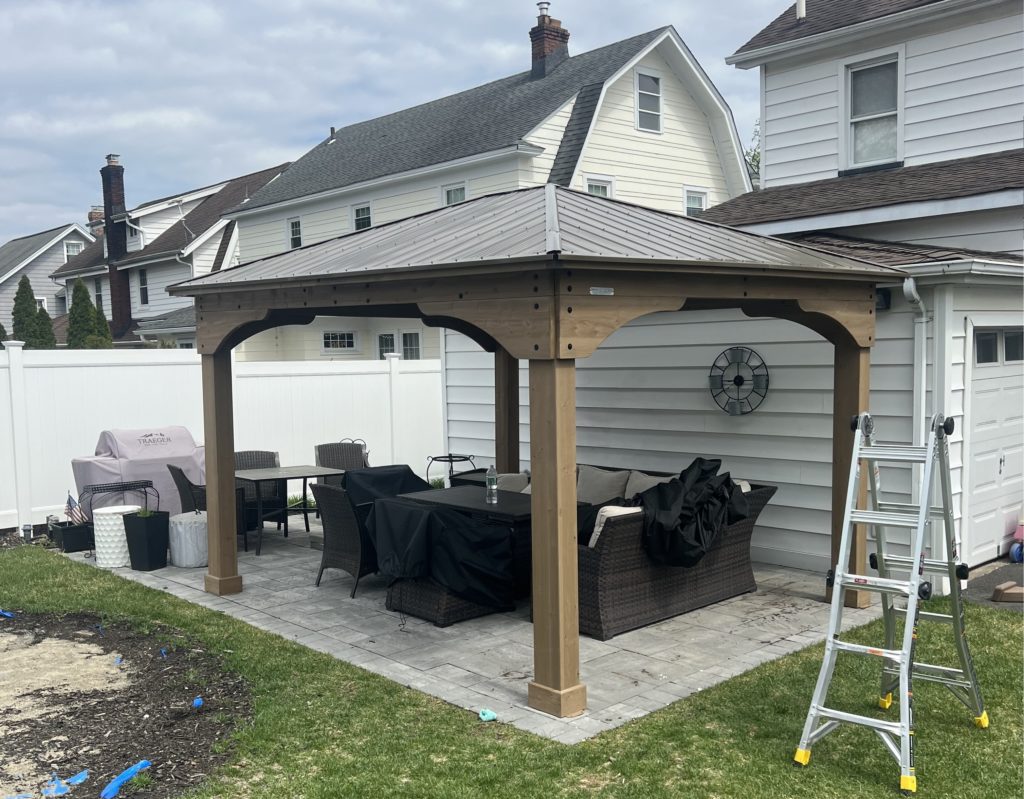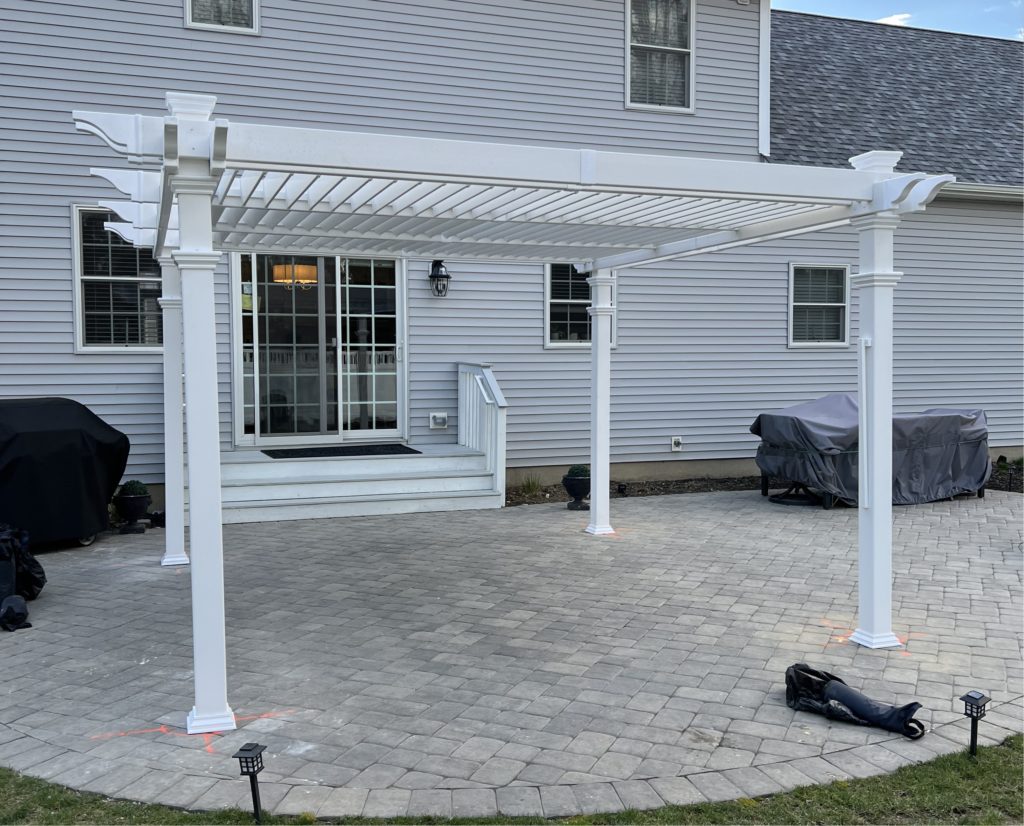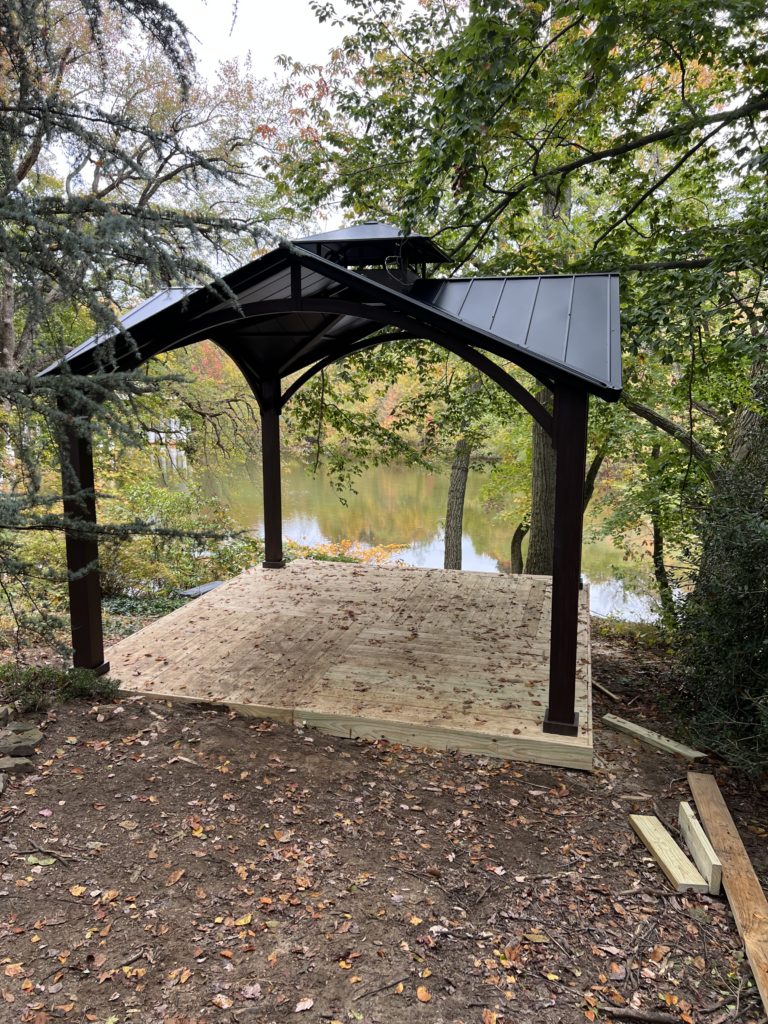Are you looking to enhance the airflow and aesthetics of your home in Wharton, NJ? Look no further than our professional ceiling fan installation, replacement, and repair services. Whether you’re looking to install a new ceiling fan, replace an old one, or fix a malfunctioning fan, our experienced team has got you covered.
OUR CONTACT
Email Support:
info@gazebo-installation.com
Ask your question:
info@gazebo-installation.com
Some of Our Portfolio Gazebo and Pergola Assembly Projects



Having a ceiling fan can make a significant difference in the comfort of your home, especially during the hot summer months. A properly installed and functioning ceiling fan can help circulate cool air and improve the overall airflow. It can also help reduce your reliance on air conditioning, leading to potential energy cost savings.
Our team of skilled electricians is well-versed in ceiling fan installation, replacement, and repair techniques. We understand the complexities involved in safely mounting a fan, connecting the wiring, and ensuring proper balance and operation. Whether you need assistance with a residential or commercial ceiling fan, we have the knowledge and expertise to get the job done right.
When it comes to ceiling fan installation, we offer a wide range of options to suit your preferences and needs. From basic, budget-friendly models to high-end designer fans, we can help you choose the perfect fan that complements your home’s style and meets your specific requirements. Our team will ensure a seamless installation process, taking care of every detail to guarantee your satisfaction.
If you already have a ceiling fan that’s not working correctly or needs replacement parts, our team can provide efficient repair and replacement services. We have access to a wide selection of fan parts and can quickly diagnose and fix any issues you may be experiencing. Your comfort and safety are our top priorities, and we strive to provide prompt and reliable solutions to all your ceiling fan concerns.
Don’t let a faulty or outdated ceiling fan bring down the comfort and aesthetics of your home. Contact us today for expert ceiling fan installation, replacement, and repair services in Wharton, NJ. Our team is ready to help you enjoy improved airflow and a more stylish interior.
Ceiling Fan Repair: Common Problems and How to Fix Them
Ceiling fans are a popular addition to homes and offices for their ability to provide both cooling and energy efficiency. However, like any electrical device, ceiling fans can encounter common problems that may require repair. In this article, we will discuss some of these common issues and provide simple solutions to fix them.
1. Fan Not Working: If your ceiling fan is not turning on or responding to the remote control, the first step is to check the power source. Make sure the circuit breaker connected to the fan is not tripped, and the fan is properly plugged in. If the power supply is intact, examine the batteries in the remote control. Replace them if necessary. If none of these steps resolve the issue, it may be a motor problem that requires professional repair.
2. Slow Speed: If your ceiling fan is running slower than usual, the cause may be a faulty capacitor. A capacitor helps regulate the fan’s speed. To fix this, turn off the power supply to the fan and locate the capacitor in the fan’s housing. Remove the old capacitor and install a new one of the same specifications. This should restore the fan’s speed to normal.
3. Noisy Operation: If your ceiling fan is making unusual noises like squeaking, rattling, or grinding, it may be due to loose components. Start by checking the screws and bolts that hold the fan’s blades in place. Tighten them if necessary. If the noise persists, it could indicate a motor issue. Lubricating the motor with non-detergent oil can often solve this problem.
4. Wobbling Fan: A wobbling ceiling fan can be both annoying and potentially dangerous. In most cases, the cause is an imbalance in the fan’s blades. Use a fan balancing kit or place a small amount of weight on the blades to correct the balance. If the problem persists, check for loose screws or bent blade brackets. Adjust or replace them as needed.
Remember, before attempting any repairs on your ceiling fan, it is crucial to turn off the power supply to avoid electrical hazards. If you are uncertain or unable to fix the problem on your own, it is advisable to seek professional help from a qualified electrician.
No power or slow speed: Troubleshooting and solutions
If your ceiling fan is not working or spinning at a slow speed, there could be various issues causing this problem. It is important to troubleshoot the situation to determine the underlying cause and find suitable solutions. Here are some common reasons for a ceiling fan to have no power or run at a slow speed:
1. Electrical connection issues: One of the first things to check is the electrical connections. Ensure that the fan is properly connected to the power source and that the circuit breaker or fuse is not tripped. Examine the wires for any signs of damage or loose connections. If there are any issues, seek professional assistance to repair or replace the faulty wiring.
2. Defective capacitor: The capacitor is a vital component of a ceiling fan’s motor. If it is faulty or worn out, it can lead to a slow speed or no power. Test the capacitor using a multimeter to determine if it is functioning correctly. If not, replacing the capacitor should solve the problem. It is recommended to seek professional help for capacitor replacement, as it requires knowledge of electrical systems.
3. Motor problems: A faulty or worn-out motor can also cause a ceiling fan to operate slowly or not at all. Listen for any unusual noises coming from the motor and check if it is heating excessively. If there are signs of motor issues, it may need to be repaired or replaced. Contact a licensed electrician or a reputable ceiling fan repair service to diagnose and resolve motor problems.
4. Remote control or wall switch malfunction: Sometimes, the issue may lie with the remote control or wall switch rather than the fan itself. Check the batteries in the remote and replace them if necessary. If you are using a wall switch, ensure it is in the correct position and functioning properly. Consider testing the fan with different controls to eliminate this possibility.
5. Fan blade alignment: Improper blade alignment can cause the fan to operate at a slower speed or create noise. Ensure that all fan blades are balanced and properly aligned. Use a blade balancing kit or try adjusting the blade brackets to achieve balance. This simple solution may resolve the issue without the need for any repairs.
If you have tried troubleshooting these common issues but are still experiencing problems with your ceiling fan, it is advisable to consult a professional technician or electrician who specializes in ceiling fan installation, replacement, and repair in Wharton, NJ. They will have the expertise and equipment to diagnose and fix the problem efficiently and safely.
Strange noises: Causes and DIY repair tips
Having a ceiling fan is a great addition to any room, providing a cooling breeze and added comfort. However, if you notice strange noises coming from your ceiling fan, it can be quite bothersome. These noises may indicate underlying issues that require attention. Here are some common causes of strange noises in ceiling fans and DIY repair tips to help resolve them.
1. Loose screws or bolts:
One of the most common causes of strange noises in ceiling fans is loose screws or bolts. Over time, the vibrations from the fan’s movement can cause these components to become loose, resulting in rattling or clanking noises. To fix this issue, use a screwdriver or wrench to tighten any loose screws or bolts that you can access. This simple step can help eliminate the noise and ensure the fan operates smoothly.
2. Misaligned fan blades:
If you hear a scraping or rubbing sound coming from your ceiling fan, the blades may be misaligned. This can happen if the fan has been accidentally bumped or if the blade screws have loosened. To resolve this issue, first, turn off the fan and use a ladder to access the blades. Gently push or pull each blade to realign them. Additionally, check and tighten the blade screws if necessary. This should reduce the scraping noise and restore proper operation.
3. Worn-out motor bearings:
If you notice a humming or grinding noise coming from your ceiling fan, it may be due to worn-out motor bearings. Over time, the bearings can become dry or damaged, causing the fan to make unpleasant sounds. While replacing the motor bearings may require professional assistance, you can try lubricating them as a temporary fix. Use a few drops of lubricating oil specifically designed for fans and apply it to the bearings. This can help reduce the noise and improve the fan’s performance until it can be professionally repaired.
Remember, if you are unsure about any DIY repair or if the noises persist even after attempting these tips, it is best to consult a professional ceiling fan repair service. They have the expertise to diagnose and fix any complex issues, ensuring your fan operates smoothly and silently.
By addressing the causes of strange noises in your ceiling fan and following these DIY repair tips, you can enjoy a quiet and efficient fan that adds comfort to your space without any disturbances.
Conclusion
Having a ceiling fan that wobbles or shakes can be frustrating and even dangerous. However, with some simple steps, you can easily balance and stabilize your ceiling fan, ensuring smooth and efficient operation.
First, make sure that all the fan blades are securely attached to the motor housing. Tighten any loose screws or bolts that may be causing the wobbling. Additionally, check for any signs of wear or damage on the blades and replace them if necessary.
Next, use a ceiling fan balancing kit to determine which blades are causing the wobbling. Attach the balancing clip or weight to each individual blade, one at a time, and run the fan to see if the wobbling improves or worsens. Continue adjusting the location of the clip or weight until the fan operates smoothly.
If the fan still wobbles after using a balancing kit, there may be an issue with the motor or the installation itself. In such cases, it is recommended to seek professional help to identify and fix the underlying problem.
To prevent future wobbling, regularly clean and maintain your ceiling fan. Dust accumulation can throw off the balance of the blades. Additionally, avoid running the fan at high speeds for extended periods of time, as this can cause strain on the motor and lead to wobbling.
In conclusion, balancing and stabilizing your ceiling fan is a relatively simple task that can greatly improve its performance and longevity. By following the steps outlined above, you can ensure a comfortable and stable airflow in your space.
OUR CONTACT
Email Support:
info@gazebo-installation.com
1126 Falls Terr, Union NJ 07083
Ask your question: info@gazebo-installation.com